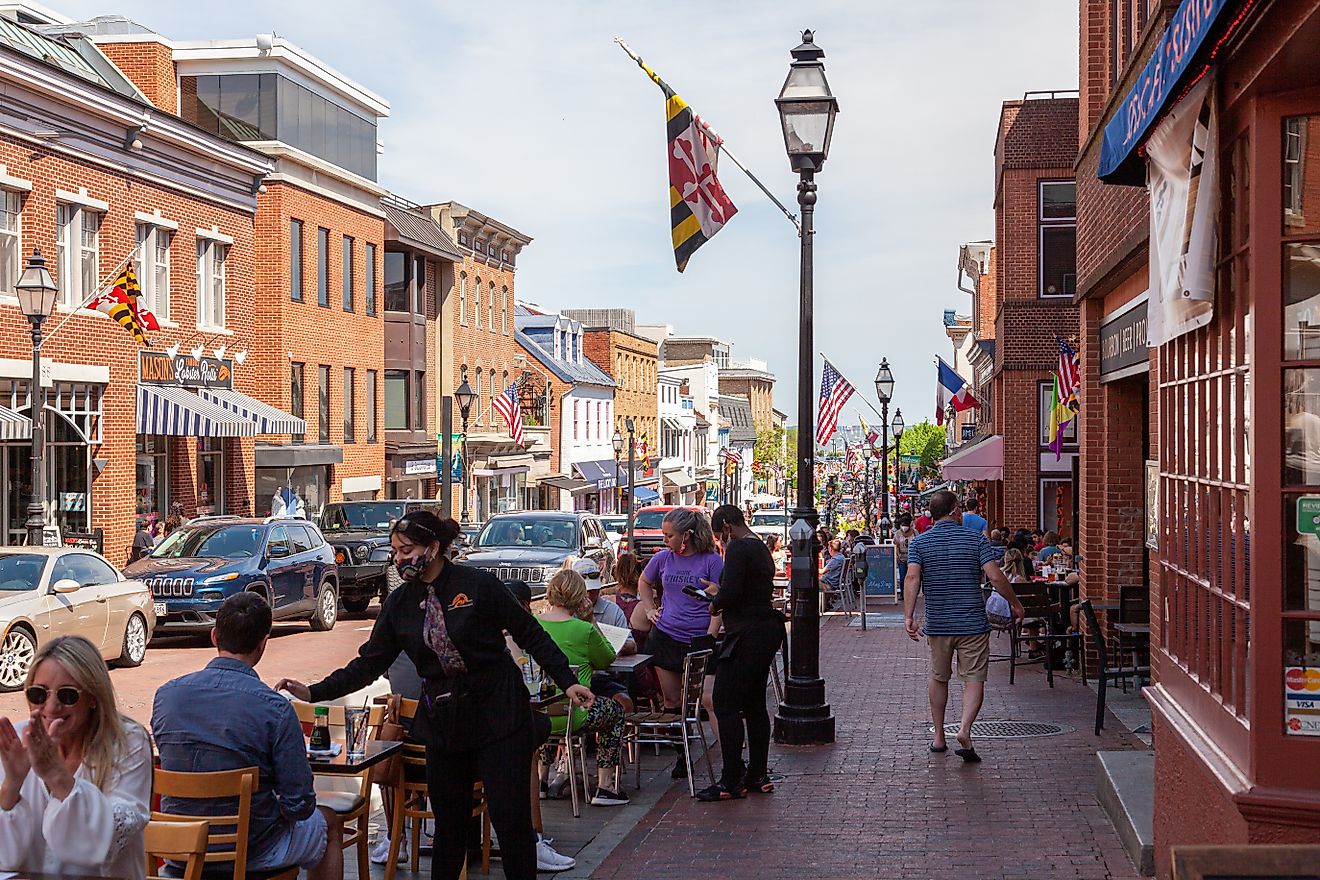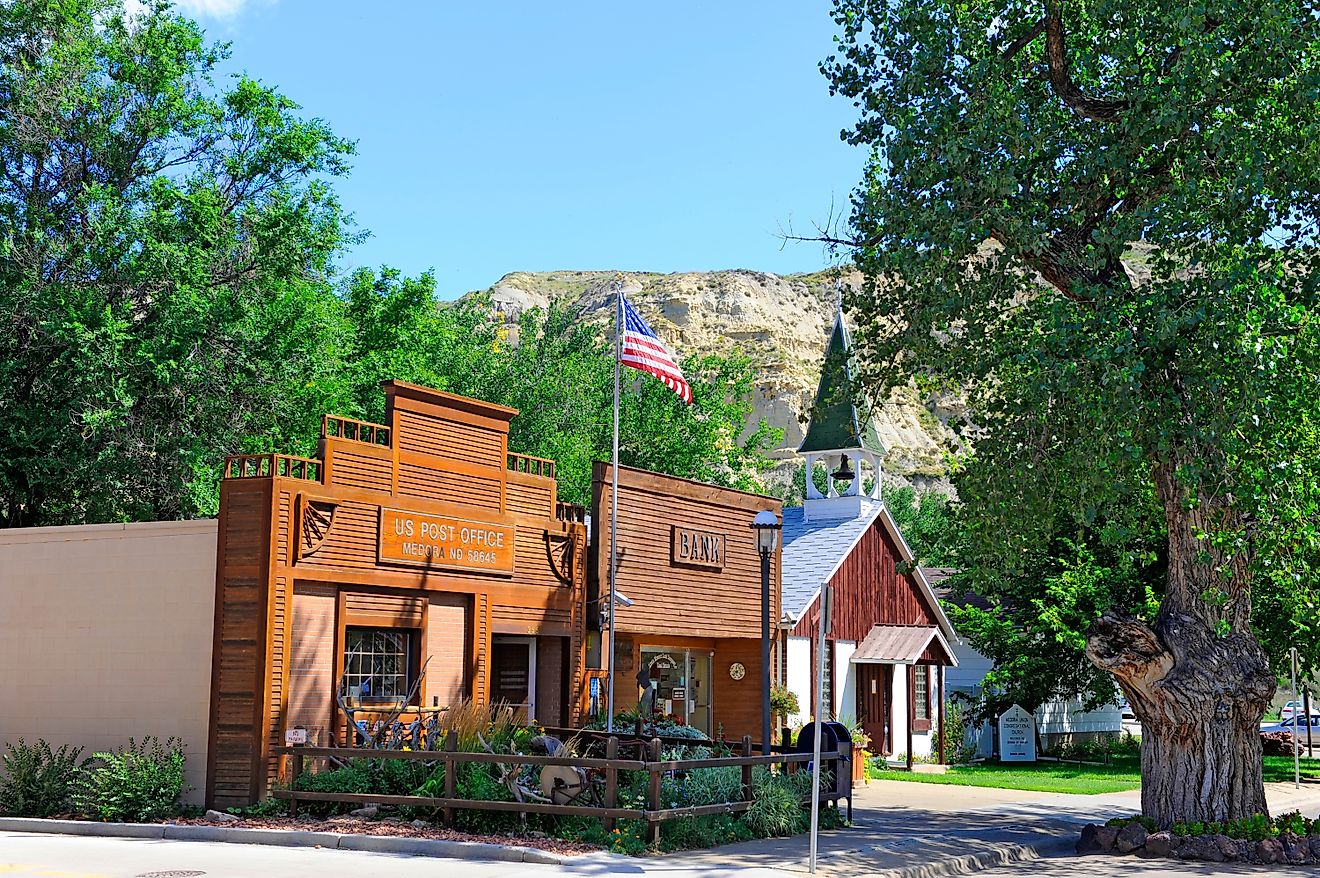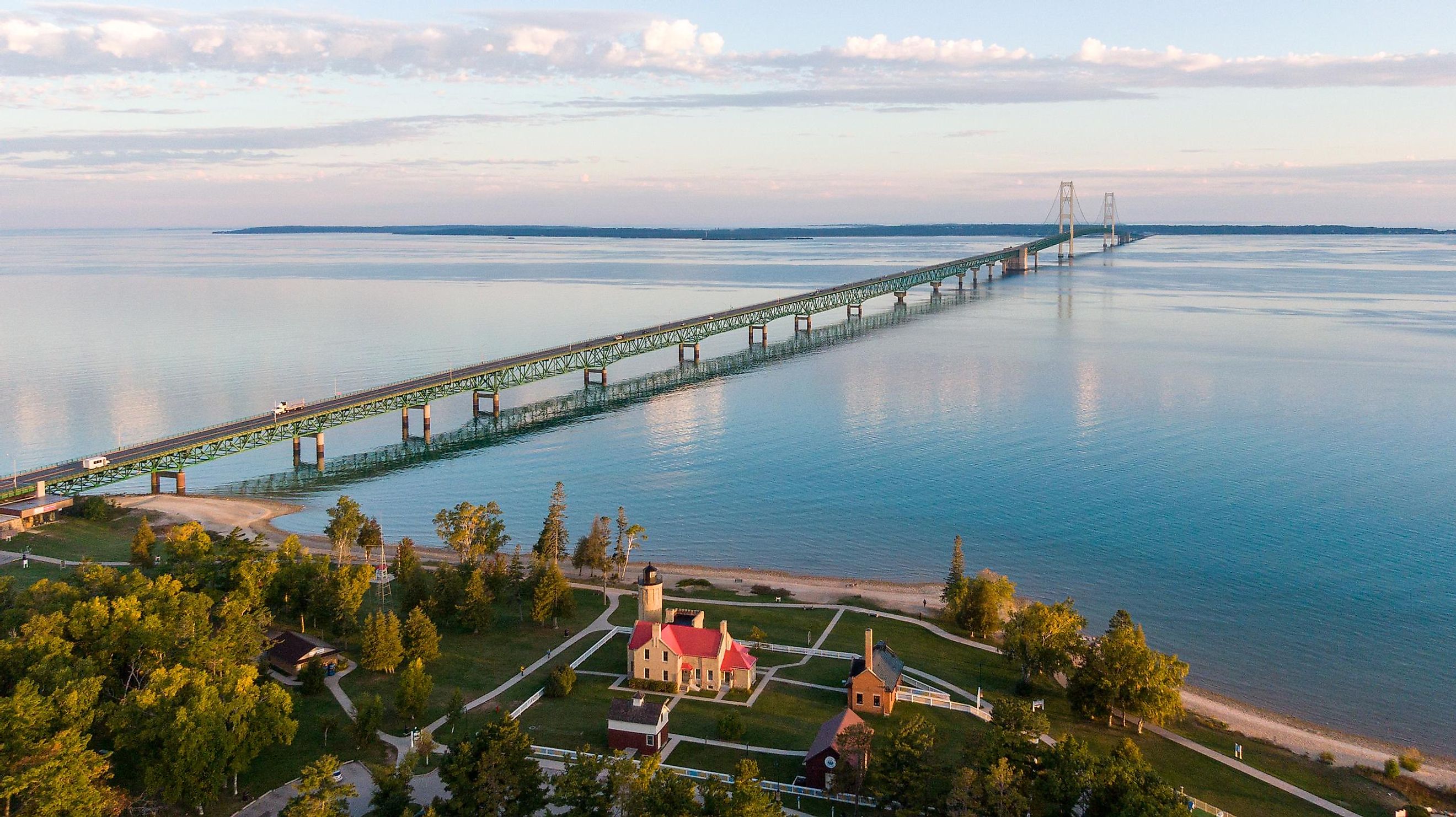
Mackinac Bridge
Michigan's Mackinac Bridge connects the state's Upper and Lower Peninsulas in bold fashion. This five-mile, four-lane suspension bridge opened on November 1, 1957, after nearly eight decades of deliberation over how to facilitate traffic flow over the Straits of Mackinac. "Mighty Mac," or "Big Mac," as the bridge is locally known, came with a hefty price tag of nearly 100 million dollars, but this was a much-needed investment, given the ever-growing stress on the ferries during the summer season, and has maintained tolls since its inception to pay off the past debts and fund any forthcoming maintenance. Each Labor Day, tens of thousands of people participate in the Mackinac Bridge Walk, which, as per the 65-year tradition, is led by the governor of the "Great Lakes State."
The Geography Of Mackinac Bridge
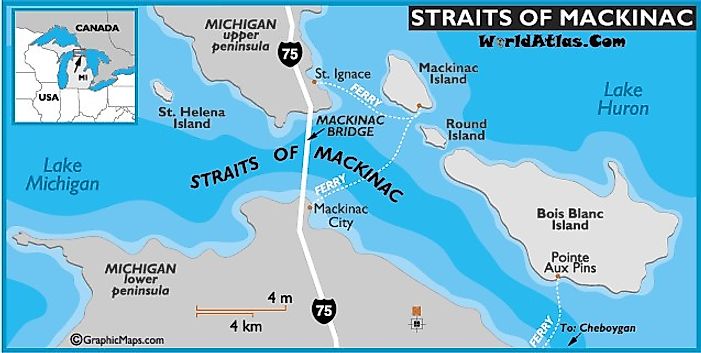
Mighty Mac was tasked with spanning the waters of Michigan's Straits of Mackinac, right where Lake Huron and Lake Michigan (two of North America's five Great Lakes) meet. The bridge's Lower Peninsula terminus is Mackinaw City (actually a village) of Cheboygan and Emmet Counties and lands on the Upper Peninsula at St. Ignace, the seat of Mackinac County. The Mackinac Bridge covers a total distance of 26,372 feet (8,038 meters) - just shy of five miles. This crossing makes up a key part of Interstate 75 (I-75) as it works its way North to the Sault Ste. Marie Canada/USA border.
A Brief History Of Mackinac Bridge
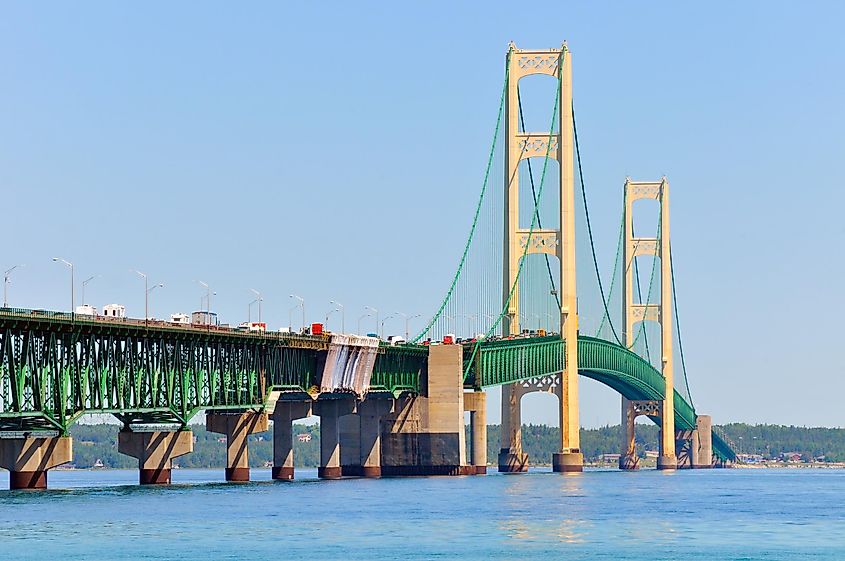
The Mackinac Bridge was commissioned by the Mackinac Bridge Authority and designed by Dr. David B Steinman. It took 48 months to build and was opened on November 1, 1957, for a total cost of $99,800,000 (USD). On that same day, the regular ferry services, which had worked valiantly for 34 years but had been struggling to keep up with the amassing traffic, ceased operations. Less than a year later, in late June, the first public walk across the lengthy suspension bridge was led by the 41st Governor of Michigan, Mennen Williams. What began as a dedication ceremony immediately morphed into an annual event that is now held on Labor Day (but still led off by the acting governor). An estimated 35,000 people participated in 2023 - the largest crowd since 2016, which saw 45,000 locals make the five-mile scenic and festive stroll.
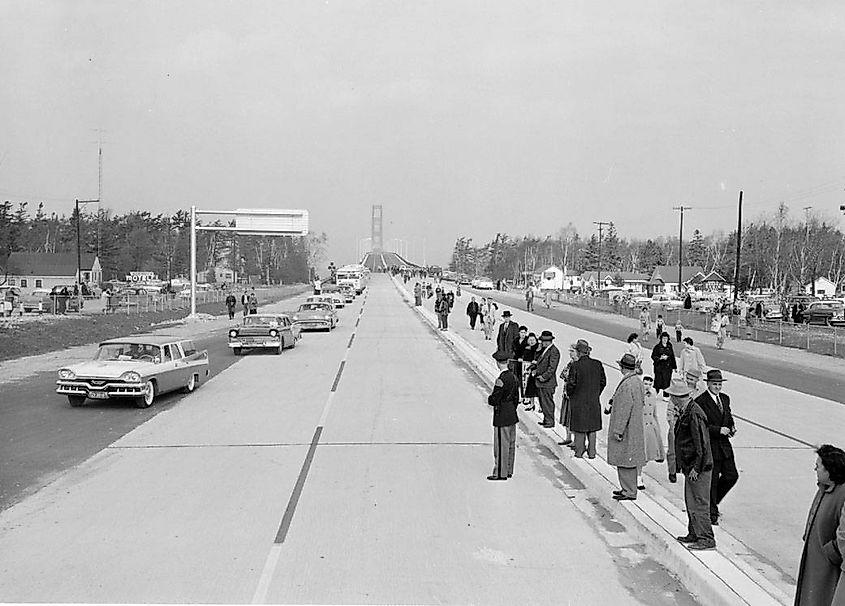
Flashing back nearly eighty years, the first conversations about the building of a bridge (or tunnel) to connect Michigan's Upper and Lower Peninsulas began in the 1880s. Unfortunately, no concrete projects were accepted over the subsequent decades. Instead, in 1923, the State Highway Department established a ferry to shuttle motorists across the Straits. Traffic levels quickly outpaced the capacity of the boats, leading Governor Fred Green to take another look at the prospect of a bridge. Having been deemed a feasible undertaking, the freshly-formed Mackinac Bridge Authority attempted to obtain funds from the Federal Emergency Administration of Public Works on two occasions between 1934 and 1936. Unfortunately, both applications were denied. Over the next decade, preliminary plans continued to be drawn until World War II threw a wrench in the scheme, leading to the abolishment of the Authority.
The 1950s saw the revival of the Mackinac Bridge Authority and the successful sale of nearly $100-million in bonds to private investors across the nation. The Merritt-Chapman & Scott Corporation was tasked with building the bridge's foundations, and the American Bridge Division of the United States Steel Corporation was awarded the contract for what, at the time, was the world's largest suspension bridge between cable anchorages. Ground-breaking ceremonies took place on May 7/8, 1954, in both St. Ignace and Mackinaw City.
Standout Statistics Of The Mackinac Bridge
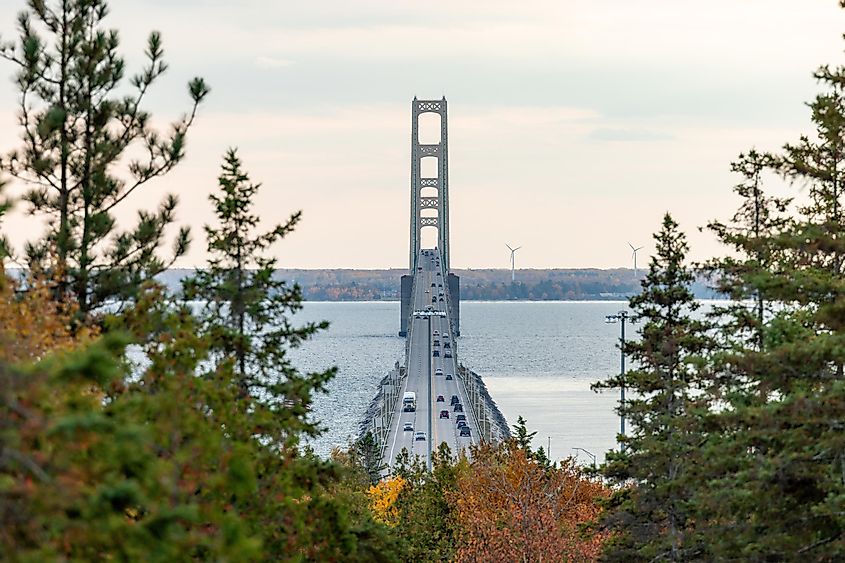
To this day, Big Mac earns its nickname by holding onto the third spot for the longest suspension bridge in the country (behind California's Golden Gate Bridge and New York's Verrazano-Narrows Bridge). The 3,800-foot (1,158-meter) central span of the Mackinac Bridge secures it the respectable 27th position globally in this same category. Most of the projects that surpass it were built towards the end of, or well into, the new millennium.
Mighty Mac has a tower height of 552 feet (168 meters), a deck height of 200 feet (61 meters), and a clearance of 155 feet (47 meters). Its total width is 68.6 feet (20.9 meters), and its road width is 54 feet (16 meters). The length of wire constituting the main cables is a whopping 42,000 miles (67,592 kilometers). The total weight of the bridge is a colossal 1,024,500 tons (929,410,766 kilograms). Remarkably, in the face of extremely windy conditions, the deck's center span is designed to move as much as 35 lateral feet.
The entirety of Mackinac Bridge's construction employed approximately 11,350 people. Three hundred fifty engineers were involved, 3,500 men worked on-site, and another 7,500 worked in the corresponding quarries, shops, mills, etc. Tragically, five men died during the project due to a variety of accidents that occurred between 1954 and 1956.
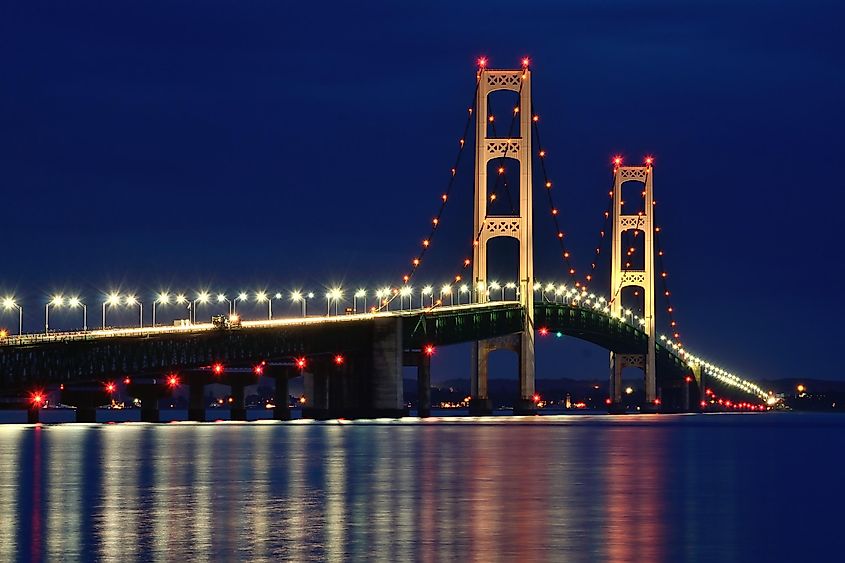
Tens of thousands of motorists pass over Mackinac Bridge on any given day (note: Mackinac Bridge is not open to pedestrians on a regular basis). Come summer tourist season, this average nearly triples. For example, according to the Mackinac Bridge Authority, in July 2023, 638,241 crossings took place (i.e., 20,588/day - well north of the peak ferry fleet capacity of 9,000/day). Interestingly, the 100-millionth crossing was logged on June 25, 1998 - exactly 40 years after the opening ceremony/first bridge walk.
As of the writing of this article, tolls are $4/car, or $2/axle for passenger vehicles, and $5/axle for all other vehicles.
The Mackinac Bridge is remarkably crafted, aesthetically pleasing, and a godsend for the steady traffic crossing between Michigan's two major peninsulas. It was many decades and 100 million dollars in the making, but it has proven itself to be well worth the wait and investment. This five-mile suspension bridge has proven to be a pragmatic asset for the Great Lake State and a source of pride for those living near the Straits of Mackinac.


